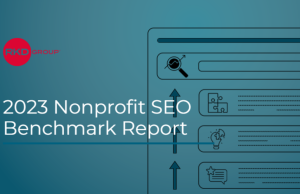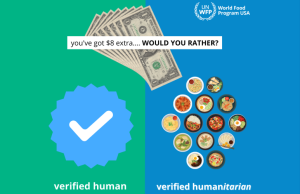While charitable donations were up during 2020, the need for nonprofits’ missions increased even faster. Managers stinted their internal structures in funding their efforts. They froze or even cut salaries or staff levels and strategically reduced programs that did not address key community needs.
At the same time, both donors and employees were interacting with the nonprofits’ donor management systems in a variety of new ways. The closure of central offices, the preponderance of home- and mobile-based workplaces, and the upsurge of individually-coordinated fundraising activities, such as solo walkathons, strained the capacity of most organizations to capture donor and volunteer information.
The dramatic changes in fundraising operations challenged the capabilities of organizations’ legacy technology, just as reduced headcount placed a premium on development staff. Older systems might not be able to capture and process recurring donations, which appeal to younger generations of donors.
“Every fundraiser I know is being asked to do more every year with pretty much the same resources,” said Melissa Wyers, executive director at tech firm EveryAction in Washington, D.C.
As staffs shrink, development staff coordinate ever-widening circles of fundraising activities. And due to what Wyers calls the “Amazon-ization” of donor expectations, when donors communicate with either a nonprofit’s employee or automated system, donors expect the full spectrum of their history with the organization to be reflected in the interactions.
This “360-degree view” is something marketers have striven toward for years, and represents one of the current driving factors for new constituent relationship management (CRM) systems.
“Nonprofits traditionally have used spray and pray marketing where everybody gets the exact same thing at the exact same time,” said Gabe Cooper, chief executive officer at Phoenix, Ariz.-based Virtuous Software. “That’s created a growing disconnect between donors who want to be personally engaged in a cause and a nonprofit. [But] the next generation of nonprofit technology out there, and nonprofit CRM systems and related tools, are now all about building personal relationships with donors at scale.”
Part of the challenge in creating such a system is that legacy nonprofit technology often is unique to each department. “If you walk in the door of most nonprofits, their program data, their fundraising data, their marketing data is siloed,” Cooper added.
Siloing can happen even within a single department. If the development department added or scaled up capabilities as needed or because managers wanted to integrate “best of breed” capabilities, the systems that support direct mail, email, major gifts and live event coordination might not share information easily.
Wyers isn’t a fan of cobbled-together systems. “Some groups, particularly smaller groups, think they’re saving money by getting the best in whatever their main money source is — email, direct mail or whatever they are doing,” she said. “But single systems — for nonprofits of all sizes — tend to get them farther than taking a bunch of different systems and trying to weave them together. What people will describe that they really want is what you get in a single platform when it’s unified.”
Seeking Flexibility
That said, nonprofit leaders might be leery of getting locked into a single on-site installed system. The amount of change CRM systems have gone through during the past few years, in both functionality and the need to access them from new locations, means systems are becoming outdated faster. Today’s marketers have to be able to receive information collected on tablets, through phones and through a website — and employees have to be able to access the full view of their donors from all of these devices, regardless of where the employees are working.
That’s not possible with a system based on legacy software installed in specific devices, such as office desk computers. CRM providers are increasingly recommending moving from installed models to software as a service (SaaS) platforms, in which the systems are hosted at the vendor and accessed as needed by users wherever they are from whatever device they’re on.
CRM platform providers are adjusting their pricing structures to reflect these new realities. Some have moved from a per-seat licensing model to an all-you-can-eat structure in which anyone within the organization has access to the platform data and functions.
“If most of what you’re paying for is the license, that’s very predictable for a nonprofit,” Wyers said. “They put it in their budget at the beginning of the year, the board approves it, and they’re ready to run.
This assumes staffers are able to use the platform. “It’s just too hard to use the systems are out there,” explained Jon Biedermann, founder and chief executive officer at SimplyFundraisingCRM in Doylestown, Pa.
Both legacy systems and supposedly free CRM systems that are laden with hidden costs. “You have to hire a consultant. It is impossible for someone to get going without having pre-knowledge of [the system] and configure it to match their needs. That can get very expensive, or the resource just isn’t available,” he said.
That’s changing. Software designers are increasingly focusing on plug-and-play models, where the focus is on data capture and analysis, according to Biedermann. For some functions, tutorial software is built into the software, reducing or even eliminating training costs.
Those self-teaching functions are essential for reaching the smaller, less-sophisticated markets. “The lowest hanging fruit is those who still have installed legacy systems,” Biedermann said. “We joke that our number one competitors are Google and Microsoft, because people are still on spreadsheets.”
While automation might feel like a scary topic, there’s a lot of value for fundraisers,” said Brandy Keller, vice president of product for education and nonprofit solutions at St. Petersburg, Fla.-based Community Brands. “Tools like dashboards and analytics, which help automate manual reporting and analysis of giving trends, are really valuable — and something that should be table stakes for any donor management system,” said Keller.
There are also opportunities within mid-and large-sized nonprofits for new or upgraded systems. “The pandemic, and having people work remotely, caused a lot of nonprofits to take a hard look at their technology,” said Susan Connors, president of Westminster, Colo.-based Aegis Premier Technologies. “There’s a potential bifurcation in how we address the small startup, the midmarket and the enterprise level.”
One vendor strategy might be, rather than system providers scaling down existing platforms for smaller clients, offering base models that give 80% of all possible functionality, which in many cases might be all a small- or mid-sized nonprofit needs. “As you go upmarket, that’s where you get the customization,” Connors said.
Customized services might include data integrity and hygiene services, as well as analytics. “There are some nonprofits that are highly technical, and they want a self-serve model,” Connors said. “Others say, ‘I don’t ever want to touch the system. Just send me my reports.’”
Regardless of which services are used at a nonprofit, Connors agrees with Wyers that marketers seeking an easy return on investment (ROI) calculation for their donor management technology investments will gravitate toward the flat monthly fee model, rather than charges based on licenses or data processing volume.
Several of the vendor said they believe a data volume-based model gives a donor technology vendor an incentive to help nonprofits grow. “Driving our pricing based on the number of donors is the best indicator of success,” Cooper said. “Are [clients] getting new donors? If so, that’s a great indication we’re being successful.”
Cooper does agree with the shift from individual seat licenses. “We want everybody at that nonprofit to feel the freedom to use the software. We don’t want somebody on the accounting team or fundraising team to not be able to use the software because they don’t want to pay for an extra license.”
Keller embraced the idea of now being an opportune time for platform providers to deepen their relationships with clients. “Organizations are coming out of a pandemic, and many people are mentally preparing for a return to more normalized giving behavior,” Keller said. “It’s a great opportunity for organizations to look internally and examine how they can partner with their vendors to maximize donor relationship management as well as other fundraising tools. There’s a lot of opportunity to look more closely at predictive analytics, donor modeling, getting those deeper insights that go beyond static reports and historical trends.”
Worth The Cost
There are those in the field who believe improvements to donor management systems will pay for themselves through efficiencies, such as integrating donation accounting and contact systems and innovations that generate increased revenue.
“I’ve seen some products where the time and energy to enter a donation and thank the donor can be pretty onerous,” said Douglas Schoenberg, chief executive and founder of SofterWare in Fort Washington, Pa. “The time spent on that can be much more effectively and productively spend on interacting with your donors.”
In some cases, legacy systems might cause money to be left on the table. “A lot are using online donation forms that are very poorly set up,” Schoenberg said. “People in the nonprofit world don’t always have good insight about the conversion rate from their online donation form. If you can improve the rate of conversion of people who go to the form and give to you by 10%, that can be well worth the time and effort of switching from a PayPal form to a product with a form functionality more optimized for nonprofit fundraising success and conversion.”
The type of insight Schoenberg mentions, along with the means to affect changes, are easier when a donor management system is hosted by the provider, he said. With an offsite-hosted system, cutting-edge industry innovations are made accessible to all subscribers when available.
These innovations can have more impact than just tweaks. Some nonprofits are testing “tipping” on their donation pages — options that allow a funder to add a small surcharge to the donation that covers processing costs.
“The trend we’re seeing is that good fundraising software will have the donor optionally add a tip to cover the costs,” Biedermann said. “Behavioral studies have shown that when you present this to a donor, 75% are in agreement that ‘Yeah, I need to cover the overhead.’”
Schoenberg is more dubious. “I think it’s one of the worst things happening in the industry,” he said, adding that fundraisers who blindly implemented the option don’t have the analytics to determine its impact on page abandonment rates. “It appears to the nonprofit that it’s costing them nothing, but it’s actually costing them donations, and far mor than just paying the payment processing costs.”
The answer is that there is no universal right answer — only what can be demonstrated for a given nonprofit. But a hosted system with robust analytics can offer page abandonment metrics that allow managers a fuller picture of the tweak’s impact.
Connors pointed to a different use case that might yield valuable information. As donor-advised funds (DAF) have increased in popularity or impact, donations from them need to be flagged for further action.
“I can’t have [the Fidelity DAF] be my donor,” she said. “You need to be able to incorporate that lower-level [individual donor] information into the donor management system.”
Connors noted that a cloud-based system offers another essential feature: constant security upgrades. “The news [of the Colonial Pipeline ransomware attack, of the Microsoft Exchange servers, among others] has many boards saying ‘do we have the right things in place to secure our data? Do we have the right vendors?’ A major factor, as people look at all of their technology, is ‘What’s the security component?’” Vendors of nonprofit software have not been immune from such attacks, the largest known to be of Blackbaud.
The strongest arguments for a new donor management system are going to come from each fundraiser’s pain points. “Thinking about 2022, and what upcoming fundraising looks like, it is very important to know the gaps an organization has identified over the last year,” Keller said. “Did you truly have a good transition to remote work? Was it easy to transition to the cloud if you had to make that switch? Do you have the right mobile functionality to support not just on the go and remote or contactless work, but also an evolving workforce?
“If we think about filling positions that were previously put on furlough or eliminated, it’s really important to think about what those employee expectations will be, how to best support them and also how to stay poised for unknown circumstances to come,” Keller said. “We’re not totally out of the pandemic. It’s important to know that you’ve got a system that can really adapt to your needs, whether that’s in person, remote, or working across a very dispersed and varied workforce.”










